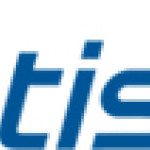- Industri: Telecommunications
- Number of terms: 29235
- Number of blossaries: 0
- Company Profile:
ATIS is the leading technical planning and standards development organization committed to the rapid development of global, market-driven standards for the information, entertainment and communications industry.
In facsimile systems, the rotation rate of the facsimile transmitter or recorder drum. Note: Drum speed is usually expressed in revolutions per minute.
Industry:Telecommunications
In facsimile systems, the relationship between the density of the recorded copy and the density of the object, i.e., the original. 2. In facsimile systems, the relationship between the amplitude of the facsimile signal to either the density of the object or the density of the recorded copy when only a portion of the system is under consideration. Note: In an FM facsimile system, an appropriate parameter other than the amplitude is used.
Industry:Telecommunications
In facsimile systems, the rate at which recorded copy is produced. Note: The reproduction speed is usually expressed (a) as the area of recorded copy produced per unit time, such as square meters per second or (b) as the number of pages per minute. 2. In duplicating equipment, the rate at which copies are made. Note: The reproduction speed is usually expressed in pages per minute.
Industry:Telecommunications
In facsimile systems, the rate at which a fixed line perpendicular to the direction of scanning is crossed in one direction by a scanning or recording spot. Note 1: Stroke speed is usually expressed as a number of strokes per minute. When the system scans in both directions, the stroke speed is twice this number. Note 2: In most conventional mechanical systems, the stroke speed is equivalent to drum speed.
Industry:Telecommunications
In facsimile systems, the product of the total scanning length and the scanning density, given by CF = L, where L is the scanning line length and is the scanning line density, both in compatible units. Note: For example, a 20-cm line and a line density of 6 scanning pitches per centimeter would yield a cooperation factor of 120.
Industry:Telecommunications
In facsimile systems, the frequency in hertz numerically equal to the spot speed divided by twice the X-dimension of the scanning spot.
Industry:Telecommunications
In facsimile systems, the excessive prolongation of the decay of the signal. Synonym hangover.
Industry:Telecommunications
In digital carrier systems, the practice or technique of preempting, at regular intervals and for the purpose of transmitting signaling information, one digit time slot that (a) is associated with the given user channel for which signaling is required, and (b) is used primarily for transporting encoded speech via that channel. Note 1: Bit robbing is an option in networks compatible with T-carrier, e.g., an ISDN. Note 2: In conventional T-carrier systems, bit robbing uses, in every sixth frame, the time slot associated with the least significant bit. Synonym speech digit signaling.
Industry:Telecommunications
In facsimile systems, the effective recorded spot dimension measured in the direction of the recorded line. Note 1: By "effective recorded spot dimension" is meant the largest center-to-center spacing between recorded spots, which gives minimum peak-to-peak variation of density of the recorded line. Note 2: "X-dimension of recorded spot" implies that the facsimile equipment response to a constant density in the object (original) is a succession of discrete recorded spots.
Industry:Telecommunications
In facsimile systems, the distance between the centers of adjacent scanning spots on adjacent lines measured perpendicular to the scanning line on the object. Note: The numerical value of the Y-dimension of scanning spot depends upon the type of system.
Industry:Telecommunications
